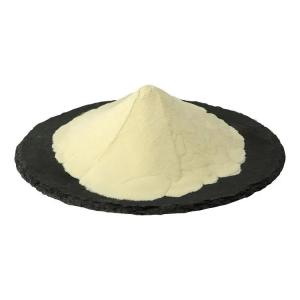News list
News Center
Hot Product
News
Phosphoric acid as part of functional food research
Time:2025-10-14
1. Introduction
Functional food research explores ingredients that contribute to specific physiological functions or improve the nutritional quality of products. Within this field, phosphoric acid occupies a unique position due to its role as a source of phosphorus and as a processing aid that influences food structure, stability, and nutrient balance. Its controlled application in food systems connects chemistry, nutrition science, and food technology.
2. Chemical Profile and Sources
Phosphoric acid (H₃PO₄) is an inorganic acid produced primarily by the treatment of phosphate rock with sulfuric acid or through thermal oxidation of phosphorus. It is widely recognized for its high purity and stable chemical behavior. In food manufacturing, food-grade phosphoric acid must meet strict safety and quality standards to ensure consistency and compatibility with functional formulations.
3. Role in Food Formulation and Processing
In the development of functional foods, phosphoric acid serves several technical purposes. It acts as a pH regulator, buffering agent, and acidulant, helping maintain the desired taste profile and stability of beverages, dairy products, and nutrition bars. Moreover, it participates in the preparation of phosphate salts that improve the textural properties of proteins and minerals in fortified foods.
4. Connection with Nutrient Systems
Phosphoric acid contributes indirectly to the nutrient composition of functional foods through its role in phosphorus metabolism. Phosphorus, derived from phosphoric acid, is an essential element in cellular energy transfer and bone structure. In functional food research, understanding the interaction between phosphorus sources and other nutrients—such as calcium, magnesium, and vitamins—is important for designing balanced and bioavailable formulations.
5. Research Applications and Innovation
Current studies in functional food science investigate how controlled use of phosphoric acid and its derivatives can influence nutrient absorption, product stability, and sensory characteristics. Research also examines alternative and sustainable sources of phosphorus, aligning with the broader goal of improving environmental responsibility within the food industry.
6. Quality and Regulatory Considerations
As with all food additives, phosphoric acid must comply with international food safety standards established by organizations such as the FAO/WHO Codex Alimentarius and regional food authorities. Functional food research emphasizes dosage optimization, purity assurance, and transparency to ensure that its inclusion supports product safety and quality without compromising consumer health.
7. Conclusion
Phosphoric acid plays a subtle yet significant role in the advancement of functional food research. Beyond its use as a processing aid, it contributes to the scientific understanding of nutrient balance, bioavailability, and product performance. Continued interdisciplinary research will enhance the sustainable and intelligent use of phosphoric acid in the design of next-generation functional foods.
Functional food research explores ingredients that contribute to specific physiological functions or improve the nutritional quality of products. Within this field, phosphoric acid occupies a unique position due to its role as a source of phosphorus and as a processing aid that influences food structure, stability, and nutrient balance. Its controlled application in food systems connects chemistry, nutrition science, and food technology.
2. Chemical Profile and Sources
Phosphoric acid (H₃PO₄) is an inorganic acid produced primarily by the treatment of phosphate rock with sulfuric acid or through thermal oxidation of phosphorus. It is widely recognized for its high purity and stable chemical behavior. In food manufacturing, food-grade phosphoric acid must meet strict safety and quality standards to ensure consistency and compatibility with functional formulations.
3. Role in Food Formulation and Processing
In the development of functional foods, phosphoric acid serves several technical purposes. It acts as a pH regulator, buffering agent, and acidulant, helping maintain the desired taste profile and stability of beverages, dairy products, and nutrition bars. Moreover, it participates in the preparation of phosphate salts that improve the textural properties of proteins and minerals in fortified foods.
4. Connection with Nutrient Systems
Phosphoric acid contributes indirectly to the nutrient composition of functional foods through its role in phosphorus metabolism. Phosphorus, derived from phosphoric acid, is an essential element in cellular energy transfer and bone structure. In functional food research, understanding the interaction between phosphorus sources and other nutrients—such as calcium, magnesium, and vitamins—is important for designing balanced and bioavailable formulations.
5. Research Applications and Innovation
Current studies in functional food science investigate how controlled use of phosphoric acid and its derivatives can influence nutrient absorption, product stability, and sensory characteristics. Research also examines alternative and sustainable sources of phosphorus, aligning with the broader goal of improving environmental responsibility within the food industry.
6. Quality and Regulatory Considerations
As with all food additives, phosphoric acid must comply with international food safety standards established by organizations such as the FAO/WHO Codex Alimentarius and regional food authorities. Functional food research emphasizes dosage optimization, purity assurance, and transparency to ensure that its inclusion supports product safety and quality without compromising consumer health.
7. Conclusion
Phosphoric acid plays a subtle yet significant role in the advancement of functional food research. Beyond its use as a processing aid, it contributes to the scientific understanding of nutrient balance, bioavailability, and product performance. Continued interdisciplinary research will enhance the sustainable and intelligent use of phosphoric acid in the design of next-generation functional foods.


 CN
CN





